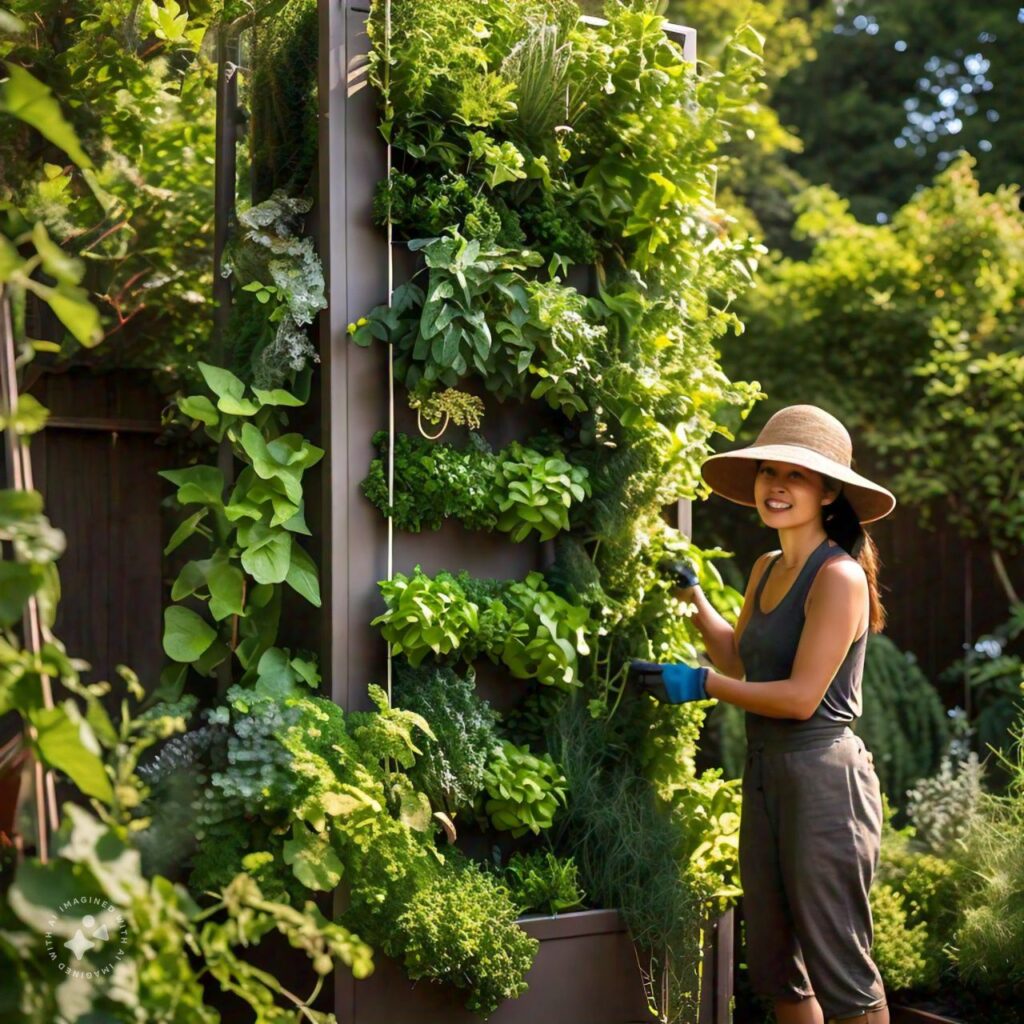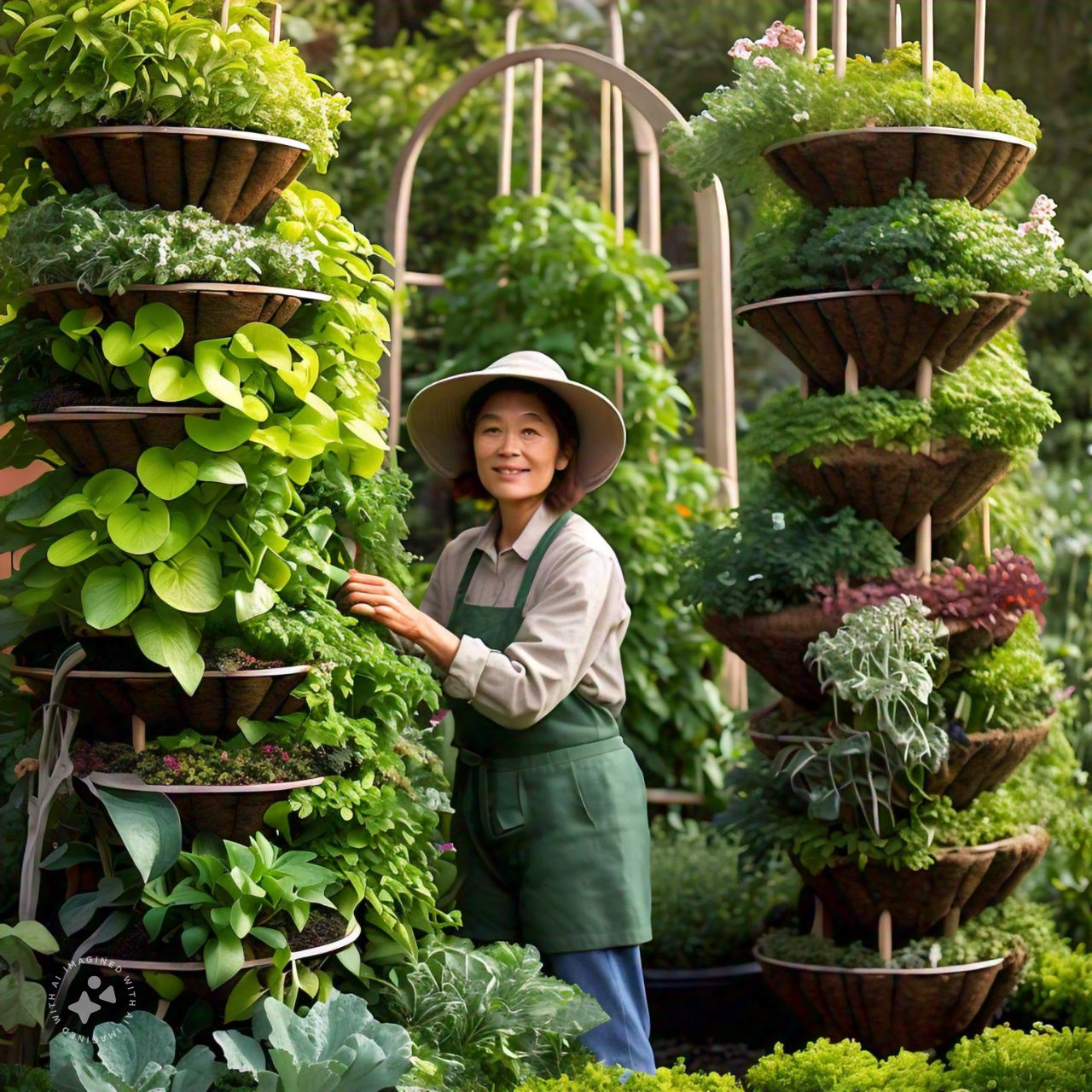In the ever-evolving world of gardening, vertical gardening has emerged as a revolutionary technique, allowing urban dwellers and garden enthusiasts to maximize limited space while cultivating a vibrant, flourishing garden. As more people gravitate towards sustainable living and eco-friendly practices, the popularity of vertical gardens has skyrocketed, making them a crucial element in modern horticulture. In this guide, we will delve into the intricacies of vertical gardening, offering detailed insights and practical tips to help you create your own verdant oasis.
What is Vertical Gardening?
Vertical gardening is the practice of growing plants in vertically stacked layers or on structures such as trellises, walls, and fences. This innovative approach enables gardeners to optimize small spaces, particularly in urban environments where traditional horizontal gardening is impractical. Vertical gardens are not only aesthetically pleasing but also contribute to improved air quality, reduced energy consumption, and increased biodiversity.
Benefits of Vertical Gardening
1. Space Efficiency
In densely populated urban areas, space is often a luxury. Vertical gardening allows you to maximize limited space, transforming unused walls and fences into productive garden spaces. Whether you live in a small apartment with a balcony or have a compact backyard, vertical gardening enables you to grow a wide variety of plants without requiring large plots of land.
2. Improved Air Quality
Plants are natural air purifiers, and incorporating more greenery into your living space can significantly improve indoor and outdoor air quality. Vertical gardens can help filter out pollutants, reduce dust, and increase oxygen levels, creating a healthier environment for you and your family.
3. Energy Efficiency
Strategically placing vertical gardens on exterior walls can help regulate indoor temperatures by providing natural insulation. During hot summer months, plants absorb and reflect sunlight, reducing the need for air conditioning. In the winter, vertical gardens act as an additional layer of insulation, helping to retain heat and lower energy consumption.
4. Enhanced Aesthetics
Vertical gardens are a visually striking addition to any space. They can transform dull, lifeless walls into vibrant, living art pieces. With a variety of plant species, colors, and textures to choose from, vertical gardens offer endless possibilities for creative expression.
5. Increased Biodiversity
By incorporating a diverse range of plants into your vertical garden, you can support local wildlife, such as pollinators, birds, and beneficial insects. This not only contributes to a healthier ecosystem but also enhances the resilience of your garden.

Types of Vertical Gardens
1. Trellis Systems
Trellis systems are one of the most common and straightforward methods of vertical gardening. They involve using a framework of horizontal and vertical supports on which climbing plants can grow. Popular choices for trellis systems include beans, peas, cucumbers, and flowering vines such as clematis and jasmine.
2. Wall-Mounted Gardens
Wall-mounted gardens are an excellent option for those with limited ground space. These gardens typically involve mounting planters or pots directly onto a wall, allowing you to grow a variety of plants, from herbs and vegetables to ornamental flowers. Wall-mounted gardens are ideal for balconies, patios, and even indoor spaces.
3. Green Walls
Green walls, also known as living walls or vertical gardens, are a more advanced form of vertical gardening. They consist of a structure that supports a variety of plants growing vertically, often with integrated irrigation systems. Green walls can be either freestanding or attached to an existing wall, and they are commonly used in commercial and residential buildings to create striking visual displays.
4. Hydroponic Vertical Gardens
Hydroponic vertical gardens use a soil-less growing medium and nutrient-rich water to cultivate plants. This method is highly efficient, as it allows for precise control over the nutrients and water supplied to the plants, resulting in faster growth and higher yields. Hydroponic vertical gardens are particularly well-suited for growing herbs, leafy greens, and strawberries.
Choosing the Right Plants for Vertical Gardens
When selecting plants for your vertical garden, it’s essential to consider the specific requirements of each species, including light, water, and soil needs. Here are some plant categories that thrive in vertical gardens:
1. Climbing Plants
Climbing plants are natural choices for vertical gardens due to their ability to grow upwards and cling to structures. Some popular climbing plants include:
- Ivy (Hedera spp.)
- Climbing Roses (Rosa spp.)
- Morning Glory (Ipomoea spp.)
- Passionflower (Passiflora spp.)
2. Succulents
Succulents are low-maintenance plants that store water in their leaves, making them ideal for vertical gardens with limited irrigation. They come in various shapes, sizes, and colors, adding visual interest to your garden. Some examples include:
- Aloe Vera (Aloe barbadensis)
- Echeveria (Echeveria spp.)
- Sedum (Sedum spp.)
- Hens and Chicks (Sempervivum spp.)
3. Edible Plants
Vertical gardens are perfect for growing edible plants, providing fresh produce at your fingertips. Consider planting:
- Herbs: Basil, mint, parsley, and thyme.
- Vegetables: Lettuce, spinach, kale, and cherry tomatoes.
- Fruits: Strawberries, raspberries, and dwarf citrus trees.
4. Ferns and Shade Plants
If your vertical garden is in a shaded area, consider planting ferns and other shade-tolerant species. These plants thrive in low light conditions and add a lush, green backdrop to your garden. Some popular choices include:
- Boston Fern (Nephrolepis exaltata)
- Maidenhair Fern (Adiantum spp.)
- Hosta (Hosta spp.)
- Snake Plant (Sansevieria spp.)
How to Build and Maintain a Vertical Garden
1. Planning and Design
Before starting your vertical garden, it’s crucial to plan and design the layout. Consider the available space, sunlight exposure, and the types of plants you wish to grow. Sketch out a design and decide on the materials and structures you will need, such as trellises, pots, or wall-mounted systems.
2. Selecting the Right Location
Choose a location that provides the appropriate amount of sunlight for your plants. Most vertical gardens require at least 6 hours of direct sunlight daily. If sunlight is limited, opt for shade-tolerant plants or consider using artificial grow lights to supplement natural light.
3. Preparing the Soil and Irrigation
Ensure your plants have access to nutrient-rich soil and adequate water. For wall-mounted or freestanding vertical gardens, use high-quality potting soil mixed with compost to provide essential nutrients. Installing a drip irrigation system can help maintain consistent moisture levels, reducing the need for manual watering.
4. Planting and Arranging
When planting your vertical garden, place taller plants at the bottom and shorter plants at the top. This arrangement ensures that all plants receive adequate sunlight and prevents taller plants from shading smaller ones. Additionally, consider the growth habits of your plants and provide sufficient support for climbing species.
5. Maintenance and Care
Regular maintenance is key to keeping your vertical garden healthy and thriving. Prune dead or overgrown foliage, monitor for pests and diseases, and fertilize your plants as needed. If using a hydroponic system, regularly check the water and nutrient levels to ensure optimal plant growth.
Conclusion
Vertical gardening is a versatile and rewarding approach to urban gardening, offering numerous benefits from space efficiency to enhanced aesthetics. By carefully selecting the right plants and following proper maintenance practices, you can create a flourishing vertical garden that not only beautifies your space but also contributes to a healthier environment.



